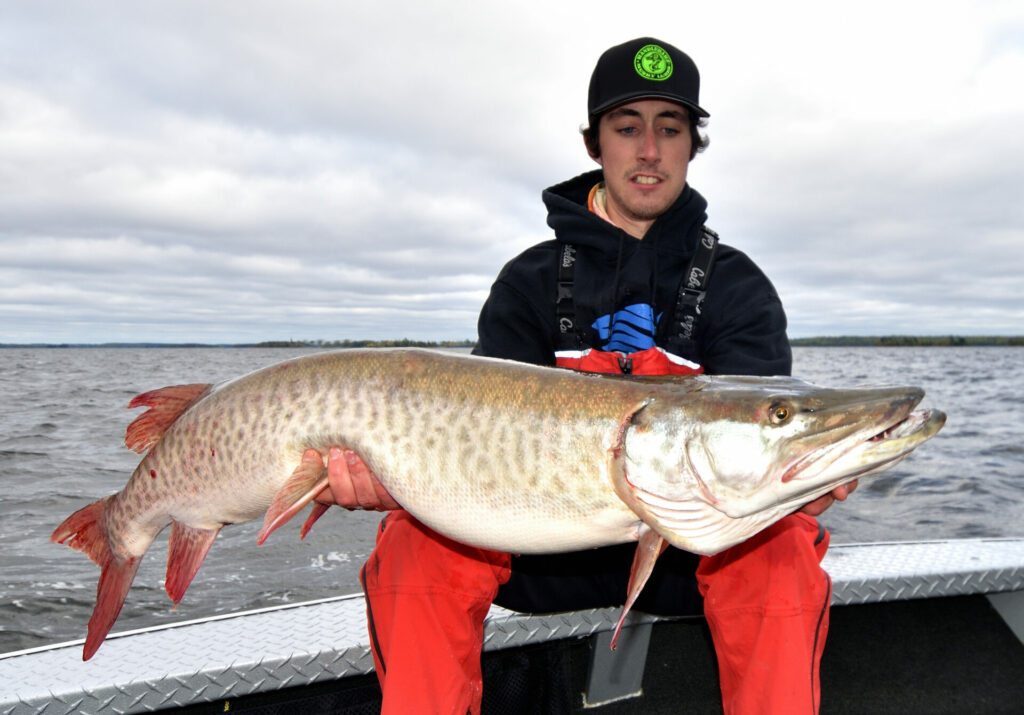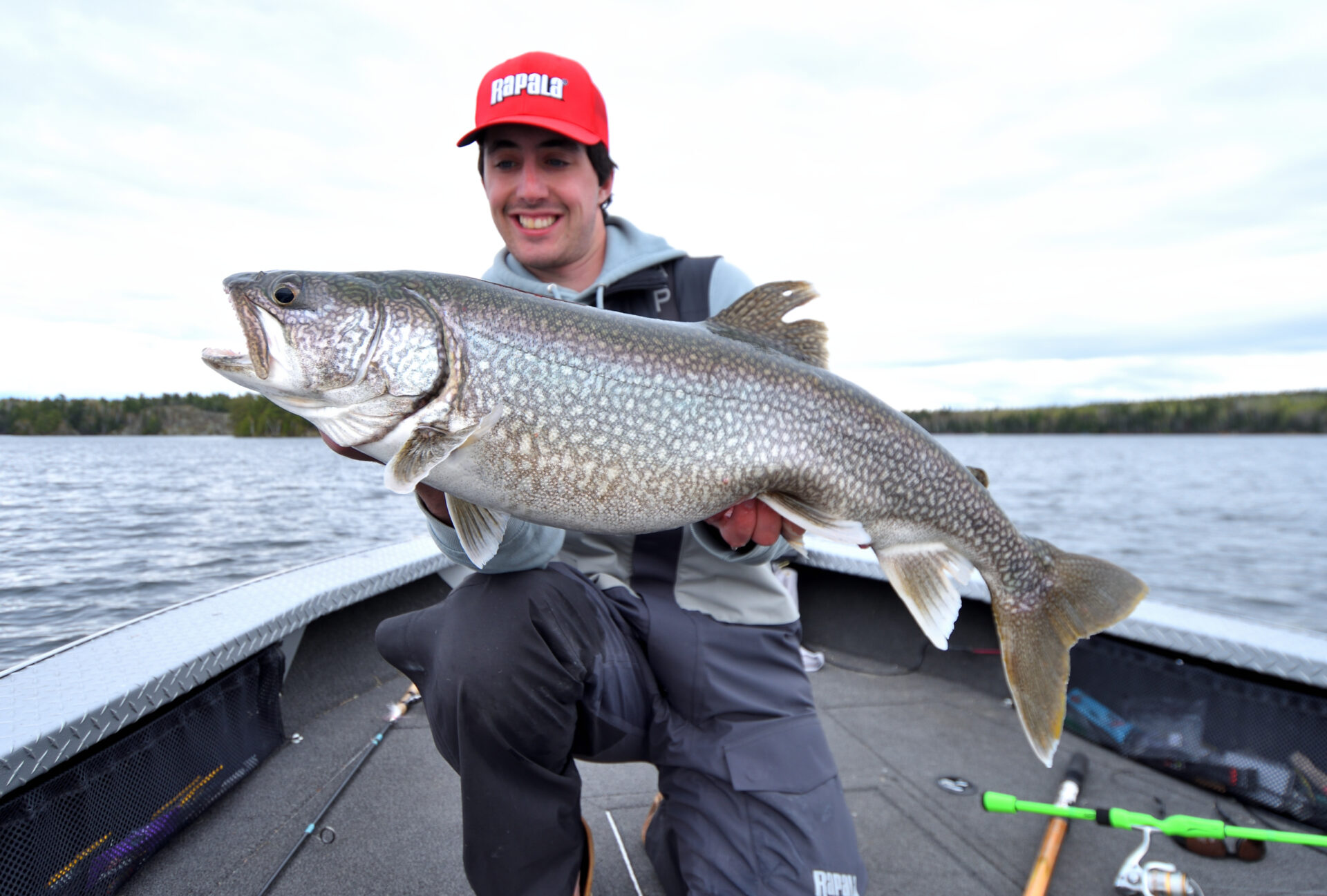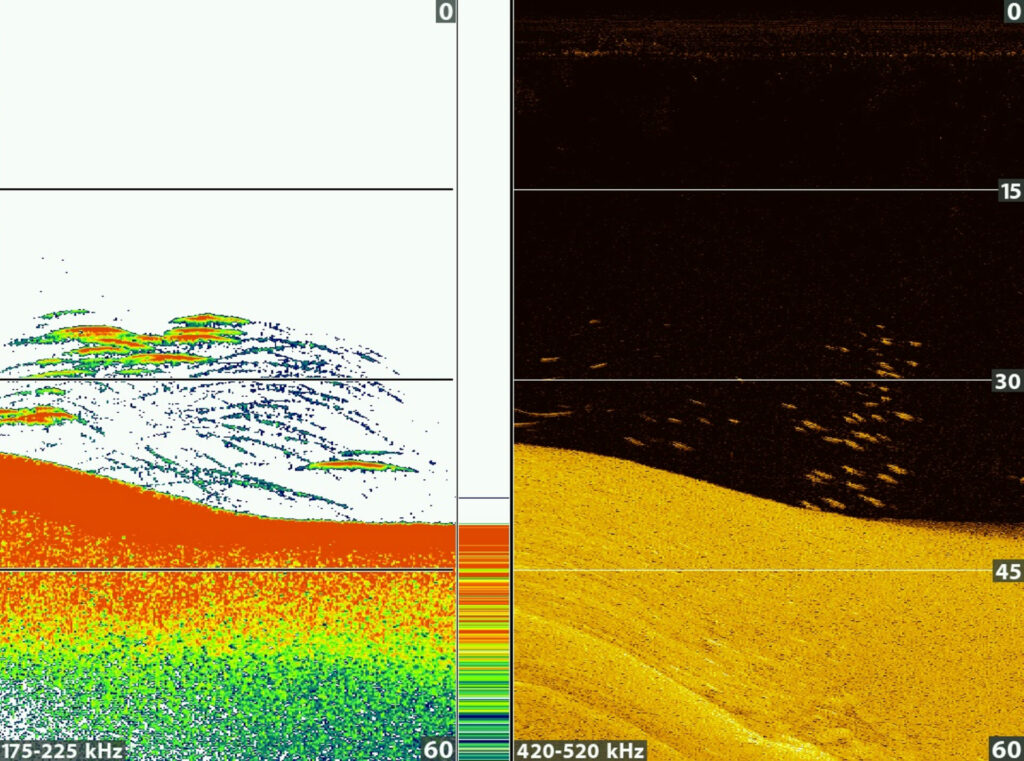The Importance of Ciscoes, Part 2
Understanding how these baitfish move and feed can lead to you to huge gamefish
Advertisement
In my last On the water online we joined up with fisheries biologist, researcher and University of Waterloo, PhD candidate, Chris Therrien who has completed some of the most fascinating study of ciscoes, or freshwater herring.
Many anglers target the silvery whitefish look-alikes for sport and the fine dining they produce, but as we discussed last week, their monumental benefit is the unique way that they support populations of trout, char, walleye, bass, pike and even muskies, allowing them to thrive and prosper. So, this week, let’s pick Therrien’s brain further and delve deeper in the cisco mystique. Starting with how they are piscivorous—fish eaters—that often show a decided preference for much larger lures than we first might think.
Advertisement
“Although it was believed for a long time that ciscoes primarily fed on plankton,” Therrien says, “and that piscivory was relatively uncommon, new research is beginning to show that it’s far more common, and its prevalence depends on several factors. Two important factors driving cisco piscivory are an abundance of small-bodied offshore and nearshore prey fish, and a lack of large-bodied predators.
“There is a small lake southwest of Sudbury, for example, that featured a food web comprised of lake trout and ciscoes. Rainbow smelt invaded the lake sometime between 1980 and 1990, establishing a novel smaller-bodied (compared to cisco) pelagic prey fish. At the same time, road salt and run-off fertilizer from nearby cottages led to a drop in oxygen in the deeper parts of the lake, making much of it unsuitable for lake trout, leading to a collapse in their numbers. Now, ciscoes have become the apex pelagic predator in the lake. They are feeding voraciously on smelt and attaining lengths larger than 20 inches. We catch them using 2- to 3.5-inch blue and silver Williams Ice Jigs and other similar sized silver spoons. The same technique has been incredibly effective in Lake Superior and Lake Michigan, where large schools of ciscoes are known to hunt for smelt and emerald shiners in the shallows.
Advertisement
“Using larger spoons also works in relatively shallow lakes in Northwestern Ontario, like Wabigoon Lake, near Dryden. In these lakes, ciscoes can be found feeding in shallow water on large schools of common shiners and other baitfish. We’ve caught large ciscoes fishing relatively shallow—five to nine feet deep—with 2- and 3-inch-long gold and silver spoons. Taking the time to really research the food web in the lake you are fishing, and then matching the hatch is the key to success.”
What I was dying to discuss with Therrien is one of the hottest trends in musky and pike fishing these days: targeting muskies that move out into the main-lake basin areas, where they suspend at the top of the water column, patiently waiting for ciscoes to come up.
Advertisement
“When I first began my career,” says Therrien, “I thought warm-water fish stayed in warm water and cold-water fish stayed in cold water. My perception of what they did began to change, however, during a spring trip to a lake that traditionally had a lake trout/cisco community, but where smallmouth bass had recently invaded.
“I was casting a minnow bait off a main lake point when I hooked my first large 20-inch smallmouth. When I got it into the landing net, it began spitting up five- and six-inch ciscoes. This stunned me, as I thought ciscoes usually frequented much deeper water than bass. Curiously, I maneuvered myself to a steep drop that went straight down to about 90 feet deep. Looking at my sonar screen, I saw a school of herring suspended at 30 feet and some larger fish below it at about 35 feet. I dropped down my Heddon Sonar, began to jig, and hammered large bass for a good 30 minutes before the school dissipated. This really opened my eyes to the fact that warm water gamefish will cruise the open water for ciscoes when the conditions are right. Since then, I’ve caught plenty of bass and pike down 40 feet, off downriggers, in mid-summer, while trolling for lake trout.
“Another time, during a routine broad-scale monitoring survey with the Ontario Ministry of Natural Resources and Forestry, I captured pike tight to the bottom in 90 feet of water, feeding on large whitefish. So, now, when the bite is slow in shallow water for these traditionally warm water species, I’ll move off main lake points and shoals and look for schools of ciscoes. When I find one, I’ll drop a jig through it and be rewarded for my efforts.”

What I found fascinating, listening to Therrien, is that it’s commonly thought that invasive smelt are responsible for the crash in ciscoe populations. And it is true, to a point, albeit with extenuating circumstances.
“Smelt definitely compete for the plankton resources in a lake and directly consume larval ciscoes,” says Therrien. “I found that to be common in several lakes that smelt invaded, similar to what happened in Lake Ontario, Lake Erie and Lake Wanapitei, near Sudbury. But it appears to be a combination of factors leading to an already declining cisco population. The smelt just push them over the edge. In Lake of the Woods, Lake Ontario, Lake Erie, and Lake Wanapitei, for example, there are commercial walleye and whitefish fisheries that have heavy bycatches of cisco. Smelt usually slip through the nets. Changes in water chemistry and zooplankton, with the invasion of spiny water fleas, also play a role.
“Interestingly, Lake Superior and Lake Nipigon have large smelt populations and commercial whitefish/ciscoe fisheries, but they also have incredibly diverse and healthy ciscoe communities, due possibly to a relatively low human footprint on the lakes, cold water temperatures that prevent other invasive species from proliferating and large deep refuges for ciscoes. It is definitely a fine balance for sure.”


